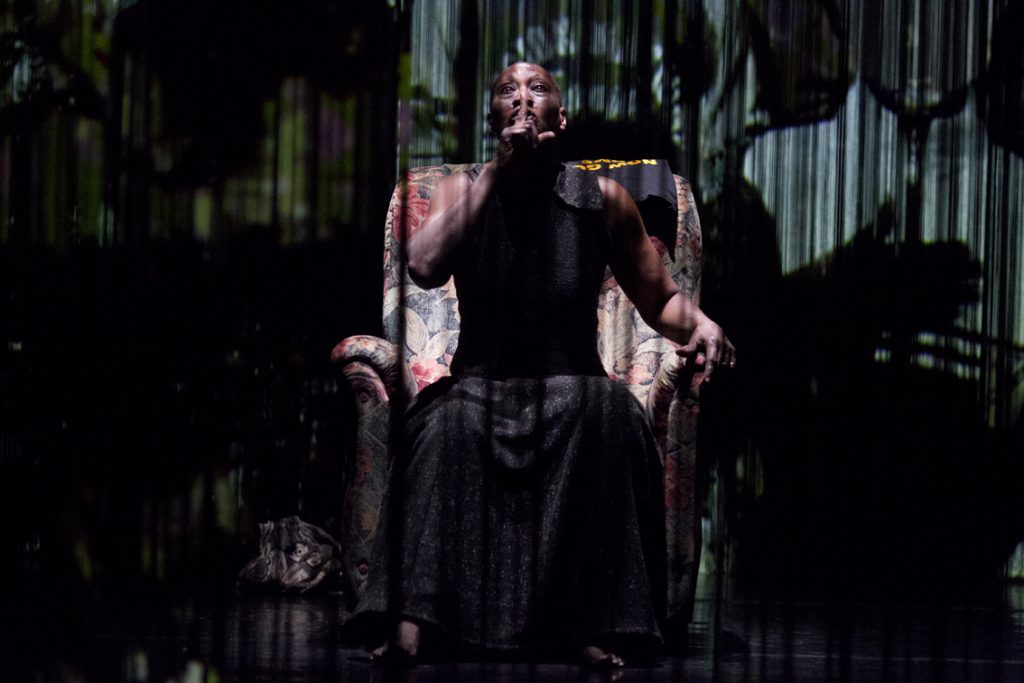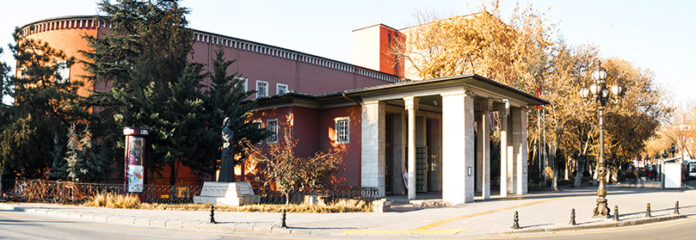In Turkey
At Ankara, ballet was borne English. In Turkey, to lay the artistic-stylistic foundations of the national ballet, with the support of the British Council, from 1947 it was Ninette de Valois (Edris Stannus, Ireland 1898-London 1986), grew up in the orbit of Sergej Diaghilev‘s Ballets Russes between 1923 and 1925, and then figure of the bow of the British balletto which the birth of the Royal Ballet must be referred and of the connected school. A special creation is also due to her, Çeşmebaşı, i.e. “to the fountain”, a “Turkish ballet” to the music composed by Ferit Tüzün, in the wake of the usual explorations of else where by the Diaghilevian company, beacon of modernity in the twentieth century. The intent was to take strength from national dances to build an invention of identity.
The British Foreign Office supported the enterprise politically, in an anti-Soviet Function, and from 1957 they had the first Turkish graduates under the guidance of English teachers sent to instruct them. But, in the 1970s, Turkey then entered the Russian sphere of influence and Soviet-style masters arrived into the country, which Dame Ninette ironically defines as suitable for local students “half-blood” in that “they’re all semi-demi Oriental!”.
The Cairo repertoire was of an English source: Les Patineurs and Les Rendez vous by Frederick Ashton; Pineapple Poll by John Cranko; Checkmate and The Rake’s Progress de Volois himself. And then the classics: Les Sylphides and Petrouchka by Micel Fokin; Coppelia, Swan Lake, The Sleeping Beauty and Giselle, also Romeo and Juliet by Alfred Rodrigues; and Prince of the Pagodas by Richard Glasstone; let’s not forget the brilliant evergreen Fille Mal Gardée by Ashton. When it came to breaking the Turkish-British line, Ninette de Valois opposed it with artistic and political arguments. Serge Lifar, the last star of the Ballets Russes, had come to Turkey to set up some of his works in view of the arrival of General Charles De Gaulle on an official visit in 1968, but nothing came of it, given the suspicions of collaboration with the German occupiers who hung over Lifar, who opened the doors of the Paris Opera to the enemy. To save him? Or to save himself, in his role as director-choreographer?
It should also be noted that in 1971 the Ankara State Ballet Company was on tour in North Africa, Algeria, Tunisia and Egypt, with small pieces of ballet and pieces of Turkish folklore.
From Africa

From black Africa arrived at the Venice Biennale to receive the Golden Lion for Career 2021 was Germaine Acogny, mother of contemporary dance in Africa; and at the new Spoleto Festival was Monique Vaute came the Sacre du Printemps by Pina Bausch with an African cast, demonstrated in her École des sables in Dakar. Meanwhile, Venice pays tribute to another son of the African diaspora, the Brazilian Ismael Ivo, passed away from the pandemic at the age of 66, who headed the dance sector for seven editions, inviting artists without borders, from Japan to Samoa, from Germany to Australia. Black Dancers matter.
Geodanza, Ninette de Valois e Germaine Acogny
In Turchia
All’Ankara il balletto nasce inglese. In Turchia, a gettare le fondamenta artistico-stilistiche del balletto nazionale, con il sostegno del British Council, dal 1947 fu Ninette de Valois (Edris Stannus, Irlanda 1898-Londra 1986), cresciuta nell’orbita dei Ballets Russes di Sergej Diaghilev tra il 1923 e il 1925, e poi figura di prua del balletto britannico a cui va riferita la nascita del Royal Ballet e della scuola connessa. A lei si deve anche una speciale creazione, Çeşmebaşı, cioè “alla fontana”, un “balletto turco” su musica del compositore Ferit Tüzün, nel solco delle esplorazioni dell’altrove usuali della compagnia diaghileviana, faro di modernità nel Novecento. L’intento era di prendere vigore dalle danze nazionali per costruire l’invenzione di un’identità.
Il British Foreign Office sosteneva l’impresa politicamente, in funzione anti-sovietica, e nel 1957 si ebbero i primi diplomati turchi sotto la guida di docenti inglesi inviati a istruirli. Ma negli anni Settanta la Turchia entra poi nella sfera di influenza russa e giungono nel Paese maestri di impronta sovietica, che Dame Ninette ironicamente definisce adatti agli studenti locali “mezzo sangue” in quanto “they’re all semi-demi Oriental!”.
Il repertorio cairota era di fonte inglese: Les Patineurs e Les Rendez vous di Frederick Ashton, Pineapple Poll di John Cranko, Checkmate e The Rake’s Progress della de Valois stessa, e poi i classici, Les Sylphides e Petrouchka di Michel Fokin, Coppelia, Swan Lake, The Sleeping Beauty e Giselle, oltre a Romeo and Juliet di Alfred Rodrigues e Prince of the Pagodas di Richard Glasstone, senza dimenticare la brillante evergreen Fille Mal Gardée di Ashton.
Quando si trattò di venir meno alla linea turco-britannica, Ninette de Valois si oppose con argomenti artistici e politici. Serge Lifar, l’ultimo Divo dei Ballets Russes, era giunto in Turchia per allestire alcuni suoi lavori in vista dell’arrivo del Generale Charles De Gaulle in visita ufficiale nel 1968, ma non se ne fece nulla, visti i sospetti di collaborazionismo con gli occupanti tedeschi che pendevano su Lifar, il quale aprì al nemico le porte dell’Opéra di Parigi. Per salvarla? O per salvarsi, nel suo ruolo di direttore-coreografo?
Da rilevare ancora che nel 1971 l’Ankara State Ballet Company fu in tournée nel Nord Africa, Algeria, Tunisia ed Egitto, con piccoli pezzi di balletto e brani del folklore turco.
Dall’Africa
Dall’Africa nera approda alla Biennale di Venezia per ricevere il Leone d’Oro alla Carriera 2021 Germaine Acogny, la madre della danza contemporanea africana; e al nuovo Spoleto Festival di Monique Vaute arriva il Sacre du Printemps di Pina Bausch con cast africano, montato nella sua École des sables di Dakar. Intanto Venezia rende omaggio a un altro figlio della diaspora d’Africa, il brasiliano Ismael Ivo, scomparso per la pandemia a 66 anni, che per sette edizioni diresse il settore danza, invitando artisti senza frontiere, dal Giappone a Samoa, dalla Germania all’Australia. Black Dancers matter.








